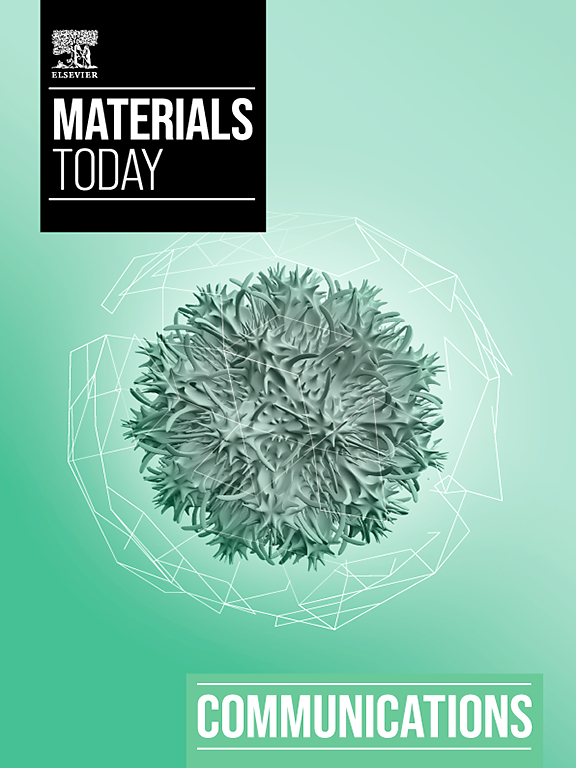Full spin polarization and pure spin current produced by the photogalvanic effect in penta-PdN2 photodetector
IF 4.5
3区 材料科学
Q2 MATERIALS SCIENCE, MULTIDISCIPLINARY
引用次数: 0
Abstract
The photogalvanic effects (PGEs) in low-dimensional devices were thought to be an important mechanism to generate pure spin current which was a essential problem in spintronics. Herein, based on non-equilibrium Green’s function combined with density functional theory, we studied linear and elliptical spin dependent PGEs in the photodetector based on the penta-PdN monolayer at zero bias. Due to spin-orbit coupling originating from the heavy metal atoms Pd and low symmetry of C for the pristine case and C for the defect cases, the penta-PdN photodetector at pristine, vacancy and substitution-doping situations can produce robust spin dependent PGEs, and the import of defects were able to strengthen the linear and elliptical PGEs, respectively. More importantly, on account of enormous splitting of the DOS for the pristine, Pd-vacancy, N-vacancy and NN-vacancy cases, spin up and spin down photocurrents accordingly formed spin splitting, which eventually led to full spin polarization and then pure spin currents in the penta-PdN photodetector. PdSe monolayer has been compounded in experiments, so structurally similar penta-PdN monolayer possesses highly possible to be prepared. Therefore, if the penta-PdN photodetector can be successful assembled, the spin-generator will be reality, even no need to be doped because the pristine penta-PdN photodetector can give rise to pure spin currents. In addtion, the penta-PdN photodetector at different situations are highly polarization sensitive. In conclude, our work suggested great potential applications of the penta-PdN monolayer on PGE-driven low energy-consumption photodetectors and spin-generators in optoelectronics and spintronics.五钯氮化镓光电探测器中的光电极化效应产生的全自旋极化和纯自旋电流
低维器件中的光电效应(PGEs)被认为是产生纯自旋电流的重要机制,而这正是自旋电子学中的一个基本问题。在此,我们基于非平衡格林函数和密度泛函理论,研究了零偏压下基于五钯单层的光电探测器中的线性和椭圆自旋相关 PGEs。由于重金属原子 Pd 的自旋轨道耦合以及原始情况下 C 的低对称性和缺陷情况下 C 的低对称性,五钯氮光电探测器在原始、空位和置换掺杂情况下都能产生稳健的自旋相关 PGE,而缺陷的输入则能分别加强线性和椭圆 PGE。更重要的是,由于原始、Pd-空位、N-空位和 NN-空位情况下 DOS 的巨大分裂,自旋上行和自旋下行光电流也相应地形成了自旋分裂,最终在五钯硒光电探测器中形成了完全的自旋极化和纯自旋电流。钯硒单层已在实验中复合,因此极有可能制备出结构类似的五钯萘单层。因此,如果五钯氮光电探测器能够成功组装,自旋发生器将成为现实,甚至无需掺杂,因为原始的五钯氮光电探测器可以产生纯净的自旋电流。此外,五氧化钯光电探测器在不同情况下都具有高度的偏振敏感性。总之,我们的工作表明,五钯单层在 PGE 驱动的低能耗光电探测器和自旋发电机上的应用潜力巨大,可用于光电子学和自旋电子学领域。
本文章由计算机程序翻译,如有差异,请以英文原文为准。
求助全文
约1分钟内获得全文
求助全文
来源期刊

Materials Today Communications
Materials Science-General Materials Science
CiteScore
5.20
自引率
5.30%
发文量
1783
审稿时长
51 days
期刊介绍:
Materials Today Communications is a primary research journal covering all areas of materials science. The journal offers the materials community an innovative, efficient and flexible route for the publication of original research which has not found the right home on first submission.
 求助内容:
求助内容: 应助结果提醒方式:
应助结果提醒方式:


